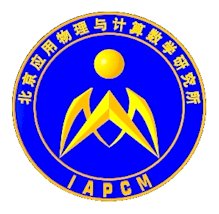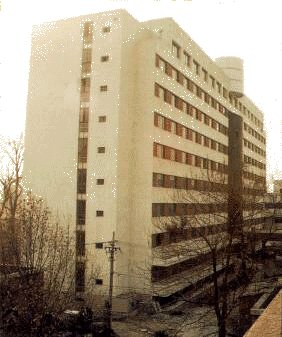





P.O.Box 8009, Beijing 100088, China Tel:+86 10 62014411 Fax:+86 10 62010108
 The Institute of Applied Physics and Computational Mathematics, under the Chinese Academy of Science, conducts research on nuclear warhead design computations for the Chinese Academy of Engineering Physics (CAEP) in Mianyang, Sichuan.
The research directions of the Institute include basic theoretical studies of scientific and engineering computing, as well as the numerical methods and algorithms which are of important applications to solve difficult problems in various applied fields. The Institute is a center of multidisciplinary researches related to scientific
computing and numerical simulation, emphasizing the study of computational mathematics and its applications.
The Institute of Applied Physics and Computational Mathematics, under the Chinese Academy of Science, conducts research on nuclear warhead design computations for the Chinese Academy of Engineering Physics (CAEP) in Mianyang, Sichuan.
The research directions of the Institute include basic theoretical studies of scientific and engineering computing, as well as the numerical methods and algorithms which are of important applications to solve difficult problems in various applied fields. The Institute is a center of multidisciplinary researches related to scientific
computing and numerical simulation, emphasizing the study of computational mathematics and its applications.
The Institute has established academic exchanges and cooperation with many institutes and universities in the world. For instance, the 1999 International Workshop on Computational Physics: Fluid Flow and Transport in Porous Media was co-sponsored by the Beijing Institute of Applied Physics and Computational Mathematics, the National Natural Science Foundation of China, the Chinese State Key Basic Research Project, the U.S. Army Research Office, the Asian Office of Aerospace Research and Development, and the Office of Naval Research.
The Committee on Data for Science and Technology, called CODATA, is a Scientific Committee of the International Council of Scientific Unions [ICSU]. Working on an interdisciplinary basis, CODATA seeks to improve the quality, reliability, processing, management and accessibility of data of importance to science and technology. The Chinese Academy of Sciences joined in CODATA in 1984, as a national member, and organized the Chinese National Committee for CODATA [CNC-CODATA]. At present there are nine Task Groups of Data under the CNC-CODATA. The Task Group on Atomic and Molecular Data is headed by the Institute of Applied Physics and Computational Mathematics and the Chinese Research Association for Atomic and Molecular Data. The espionage case of Peter Lee, who went to work for TRW in 1991, involved a three-week trip to China he made in the spring of 1997 as a paid guest of China's Institute of Applied Physics and Computational Mathematics. On 11 May 1997, while in Beijing, Lee gave a two-hour lecture on submarine tracking technology being developed by TRW, Inc. Lee pled guilty to filing a false document and to divulging classified secrets, and on 26 March 1998 Lee was sentenced to 1 year in a halfway house, 3,000 hours of community service, and a $20,000 fine.
